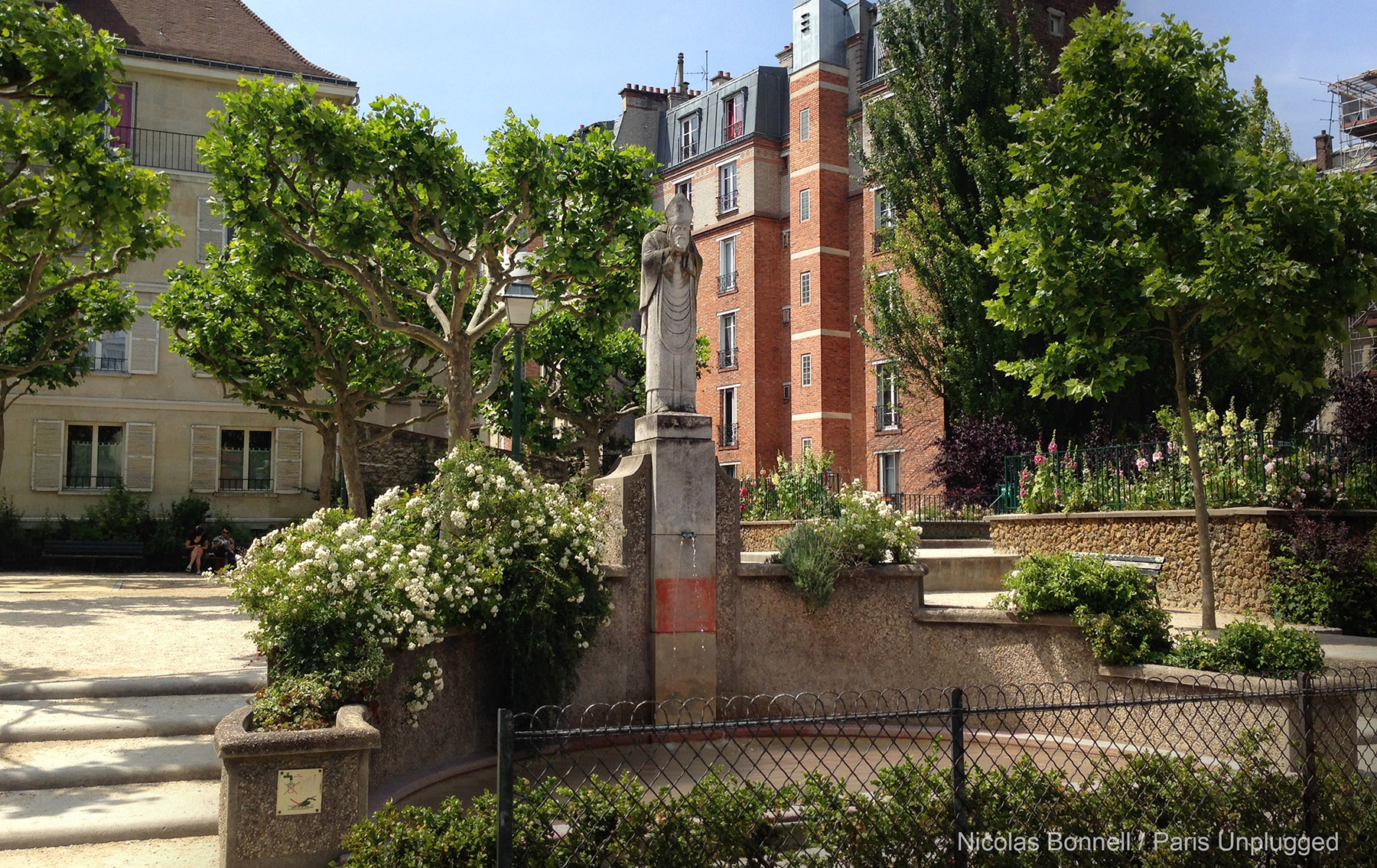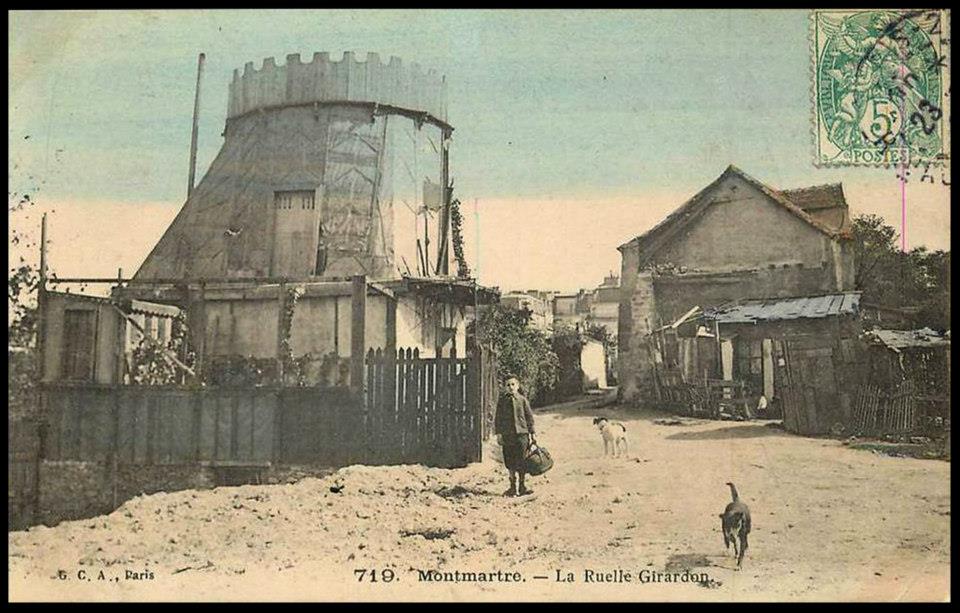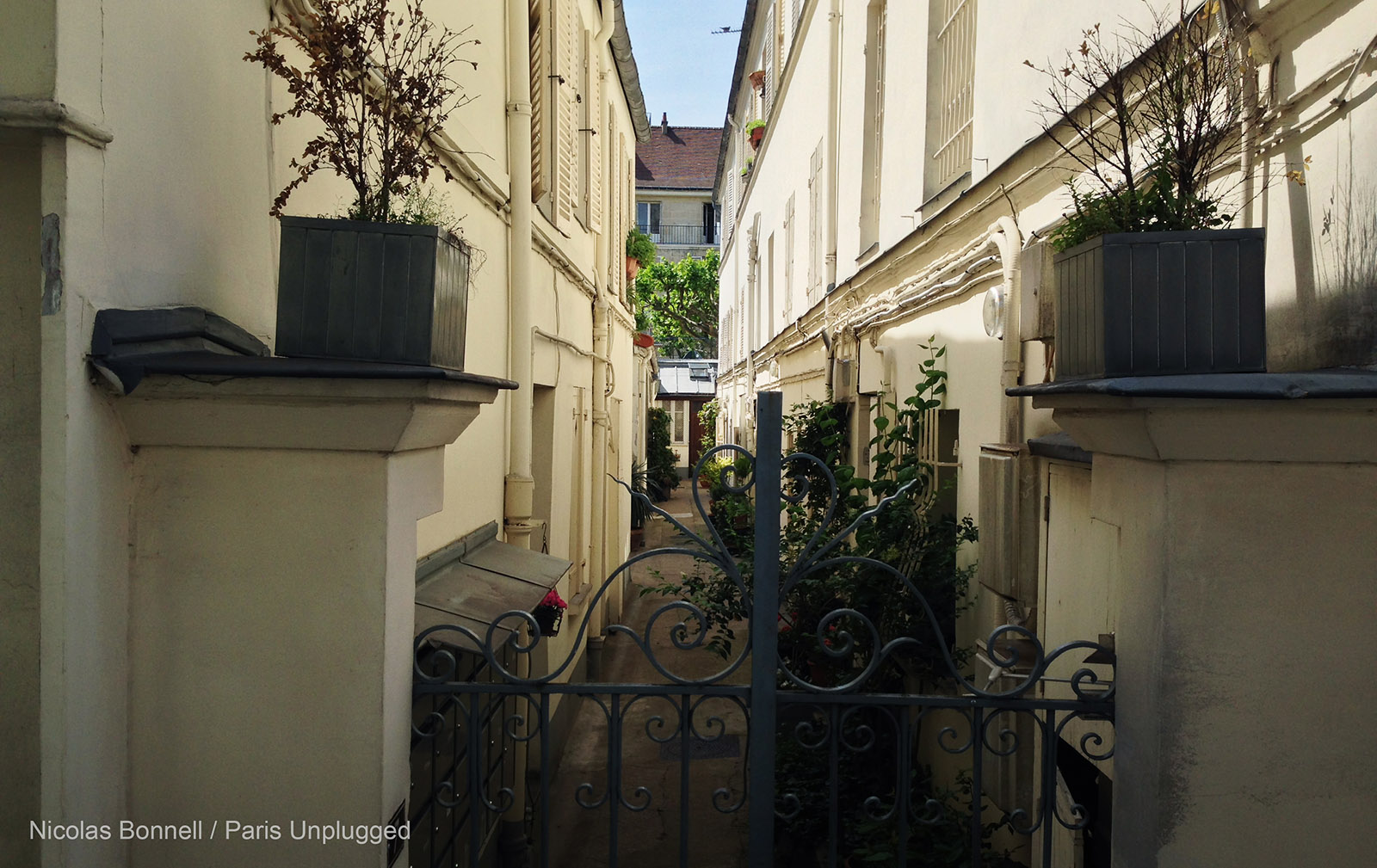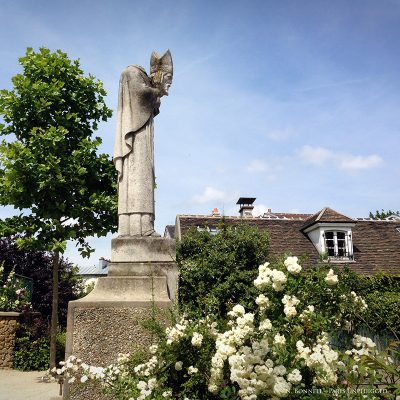
L’Impasse Girardon, aujourd’hui urbanisée, faisait autrefois partie intégrante du fameux Maquis de Montmartre. (voir)
À l’angle se trouvait la fameuse « Tour du Philosophe ». Bâtie de bric et de broc, cet édifice rond évoquait le tonneau de Diogène. C’est ainsi que les enfants du quartier baptisèrent son propriétaire « philosophe ».
Baptisé à l’origine Rue de la Fontaine Saint Denis, l’axe possédait en son extrémité une source dite miraculeuse.
Cette légende remontait déjà au temps du paganisme avant que Saint Denis ne devienne le premier évangéliste parisien. Après sa décapitation par les hommes du Préfet romain, on raconte que le Saint se releva, partit laver sa tête à la source puis descendit la Butte sa tête sous le bras. Il marchera six kilomètres avant de s’écrouler à l’endroit ou se trouve aujourd’hui la Basilique qui porte son nom.
Les légendes Montmartroises prétendent que la fontaine garderait depuis des pouvoirs miraculeux. Son eau guérirait les fièvres et inciterait à la fidélité. L’adage prétendait que « Jeune fille qui a bu à la Fontaine Saint Denis, reste fidèle à son mari ». Les habitants racontaient qu’à chaque miracle, l’on pouvait y entendre des louanges. Baptisée aussi Fontaine du Martyr, une statue de Saint Denis y sera adjointe durant des années.
Celle ci deviendra un lieu de pèlerinage régulier. Ignace de Loloya y fera une halte en 1534.
En 1810 la fragilité des sols aura raison de la source qui disparaîtra au cours d’un effondrement de terrain. Malgré cela, les fameuses louanges auraient encore été entendues à l’aube du XXe siècle. En 1851, une nouvelle fontaine sera créée à quelques mètres Square Suzanne Buisson.
Des années plus tard, l’Impasse Girardon abritera d’illustres artistes tels Paco Durrio, Pigeard, Durrieu, Henri Laurens ou Camoin. Non loin de là se trouvent les jardins privés du Moulin de la Galette qui abritent l’observatoire de la Mire du Nord, si cher aux occultistes.
___________
Today, the Impasse Girardon is in the middle of the city, but once this small passageway was an integral part of the ‘Maquis’ or ‘scrubland’ of Montmartre (see article).
At the corner of the lane stood the famous ‘Philosopher’s Tower’, a small, round building constructed with various bits of debris. Because the strange structure reminded the local children of the ceramic jar in which the ancient philosopher Diogenes was reputed to have lived, they nicknamed the man who lived there ‘le philosophe’, and his house the ‘philosopher’s tower’.
The street was originally named Rue de la Fontaine Saint Denis, since it ran past a fresh spring which was reputed to have miraculous powers. This legend can actually be traced back to pagan tradition, and is thus older than St. Denis himself, who was the first evangelist in Paris. After St. Denis’s decapitation by order of the Roman prefect, it is said that the saint stood up, washed his head in the spring, and carried it back down the hill under his arm. He then marched six kilometres to the town now named St. Denis, just outside Paris, before falling down on the spot where a basilica now stands in his name.
Local legend has it that the fountain still holds magic powers. Its water will heal fevers and incite fidelity. An old adage states that ‘any young woman who drinks from the fountain of St. Denis will stay loyal to her husband’. Old residents claim that every time a miracle occurs, words of praise can be heard from the fountain. Also known as Fontaine du Martyr, or ‘Martyr’s fountain’, a statue has stood on the site for many years. The spot has long been a place of pilgrimage, notably for the Jesuit leader Ignatius Loyola who stopped here in 1534.
In 1810, soil erosion caused a landslide which filled in the water source. Nonetheless, the famous words of praise continued to be heard right up until the dawn of the 20th century. In 1851, a new fountain was installed a few metres away in the Suzanna Buisson gardens.
Some years later, the Impasse Girardon became home to some well-known artists such as Paco Durrio, Pigeard, Durrieu, Henri Laurens, and Camoin. Not far from here can be found the private gardens of the Moulin de la Galette, which houses the ‘Mire du Nord’ observatory, a special site for occultists.
Translation by Tim Mc Inerney





